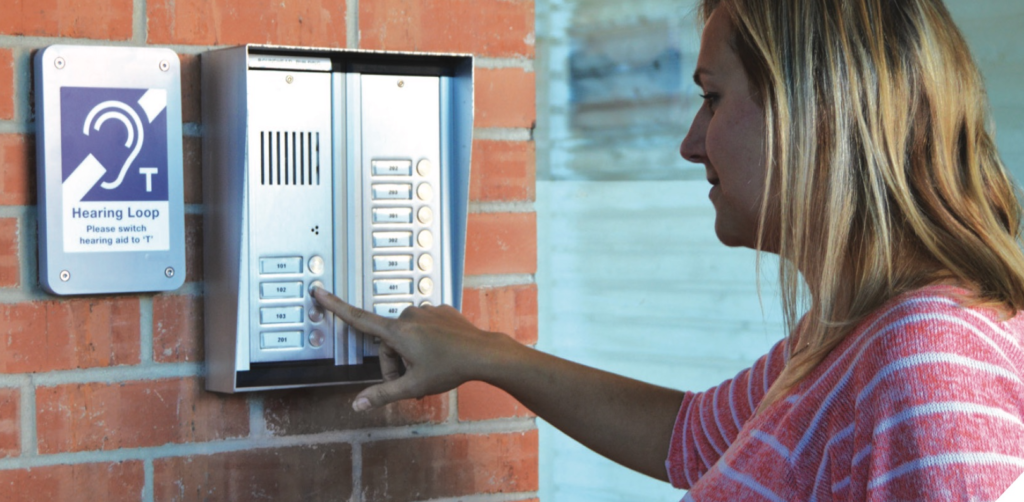Importance of Induction Loop Provision

During access audits, our NRAC Consultants are always recommending or inspecting induction loops.
Induction loops are used to help hearing aid users effectively cut out background noise which results in better clarity of speech. One of the biggest issues hearing aid users face is background noise, this is because the microphone of a hearing aid amplifies not just a person talking but every single sound. This is where induction loops can help, when a hearing aid user turns on the T switch on an aid this will allow them to focus on direct sounds being picked up by an induction loop’s microphone.
There are numerous different types available that we often pick up or recommend in our access audits. These are the main three different types –
Room induction loops – These are used for areas in which numerous people are likely to be present such as meeting rooms, classrooms, and conference halls. Other areas can be community centres, wedding venues and court rooms. These systems typically are set up with a microphone and a wire is looped around the room (normally hidden in the ceiling / flooring).
Counter induction loops – These are normally installed at reception desks or where front-line staff are present such as a bank. Reception induction loops should always be mains powered with only the microphone and a sign visible. Many service providers as identified during our access audits tend to use a portable unit at a reception desk. This is not recommended.
Portable induction loops – These are great for being on the go. They can be moved around from room to room and are only really recommended
for one-to-one meetings. They also represent good value for money, but their performance is not generally as good as fixed systems.
Our team of NRAC Access Consultants does not generally tend to recommend headset systems as these require further management procedures (charging, understanding what they are for, and they can get lost etc.) More importantly a hearing-impaired person must ‘ask’ to use the facility. It draws attention, from our experience many people would just not bother.
Under the Social Model of Disability (we believe) a person should just be able to walk into an area, see an induction loop sign and be free to make the choice to use the facility. Having headsets could be likened to / be like asking for a key to an accessible toilet!
